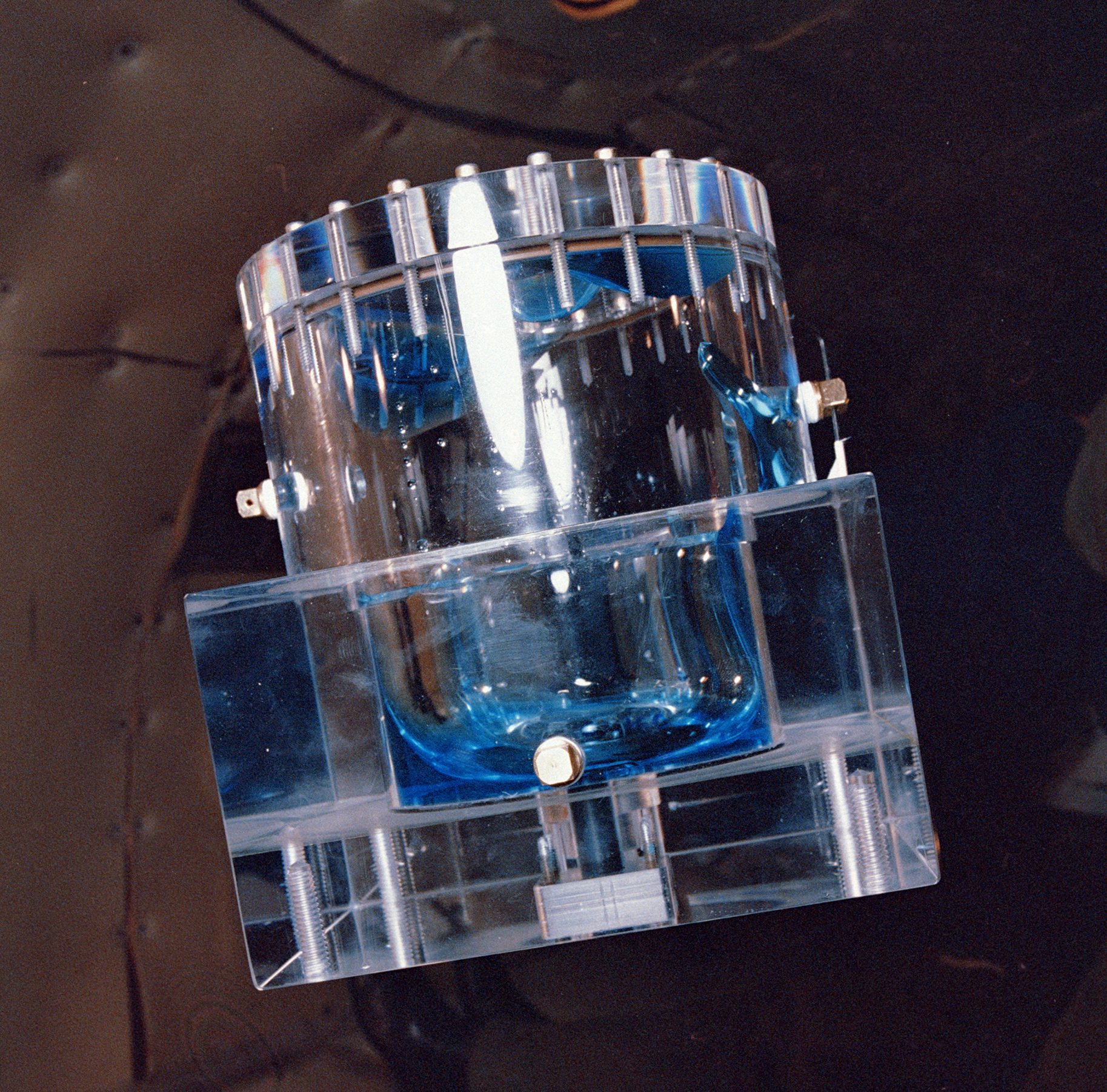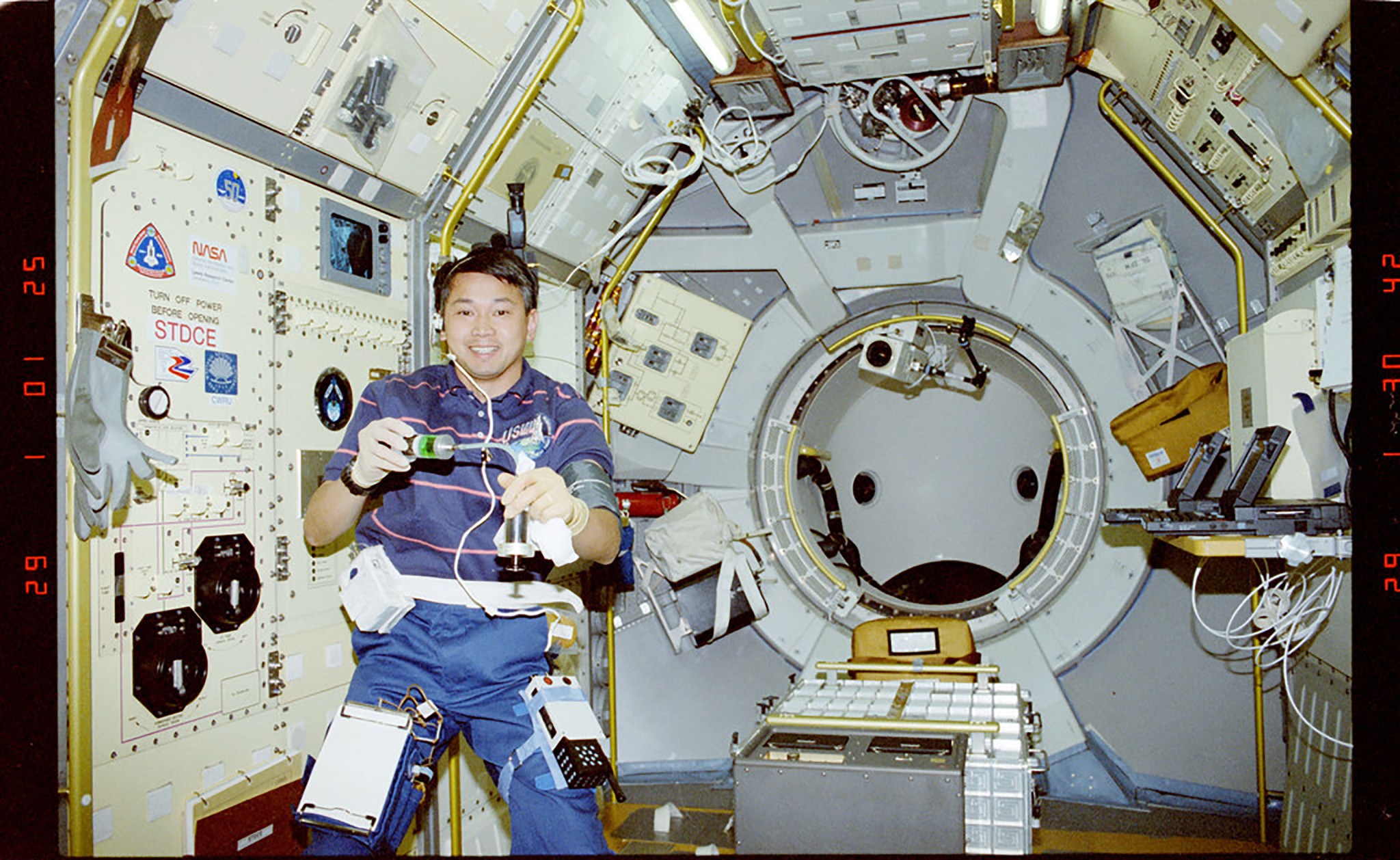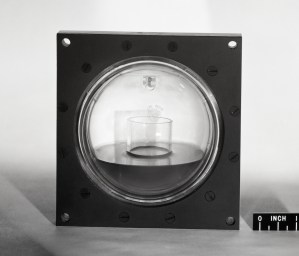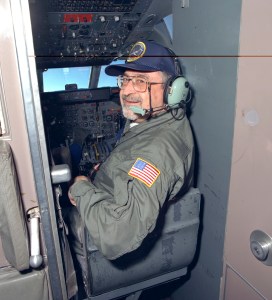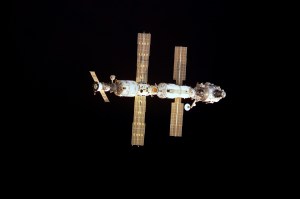On June 25, 1992 the space shuttle Columbia transported the United States Microgravity Laboratory and its 31 experiments into earth orbit. NASA’s Lewis Research Center (today NASA Glenn) established its leadership in the field of microgravity by contributing seven experiments, including a complex fundamental fluids investigation known as the Surface Tension Driven Convection Experiment (STDCE).
STDCE was a project to determine the effect of surface temperature variation on the internal movement of liquids, and was a collaboration with Case Western Reserve University (CWRU) professors Simon Ostrach (a former Lewis researcher) and Yasuhiro Kamotani.
The experiment had its roots in the early 1970s when Ostrach was asked to assess the potential benefits of growing crystals in space without gravity-induced buoyancy flows. It was thought that in the low gravity environment, surface tension would hold fluids together, thus eliminating the need for a containment vessel.
Ostrach, however, cautioned that surface tension would cause some flow, even in microgravity. Ostrach and Kamotani subsequently developed computer models that predicted that heating a portion of the liquid surface would cause the surface tension to drive the liquid to the cooler areas.
In 1980 Ostrach submitted a proposal to NASA to test this theory over an extended period on the shuttle. NASA approved the experiment in March 1985, and assigned Lewis the responsibility for the design, fabrication, and testing of the experiment. STDCE’s high-profile, demanding requirements, and tight schedule required a substantial commitment from the center.
STDCE was highly interactive and required close attention from the STS-50 crew. It consisted of a small pool of silicon oil with either a flat or curved surface. For half the tests, a laser aimed at the surface provided constant heat flux. For the remainder, a small cylindrical heater maintained constant temperature levels. The temperature was tracked on the surface with infrared imagery and in the pool by thermistor probes.
After six years of intense effort, Lewis delivered the STDCE hardware on schedule in May 1991. One technician noted, “It is almost like seeing a child graduate and go away.”
Payloads Specialist Eugene Trinh initiated STDCE in orbit on June 29, 1992. Thirty-eight variations were tested over three marathon six-hour sessions. The video feed and telemetry were monitored by a 19-person team of Lewis and CWRU engineers at Marshall Space Flight Center and a larger support group in Cleveland.
Subsequent analysis of STDCE’s 12.5 hours of data successfully validated Ostrach and Kamotani’s computer models, demonstrated the influence of surface tension on steady fluid motion, and provided the first observations of surface tension driven convection in a curved-surface fluid.
Ostrach considered STDCE to be the highlight of his storied career, and a number of Lewis employees received awards for their contributions. Howard Ross, Microgravity Combustion Branch chief, referred to the USML-1 as “a kind of personal Olympics for many of us at Lewis, where years of personal effort culminated in this singular occasion.”
There was not much time to celebrate, however, as they soon began preparing STDCE-2 for STS-73 in 1995.
Robert S. Arrighi
NASA’s Glenn Research Center


























